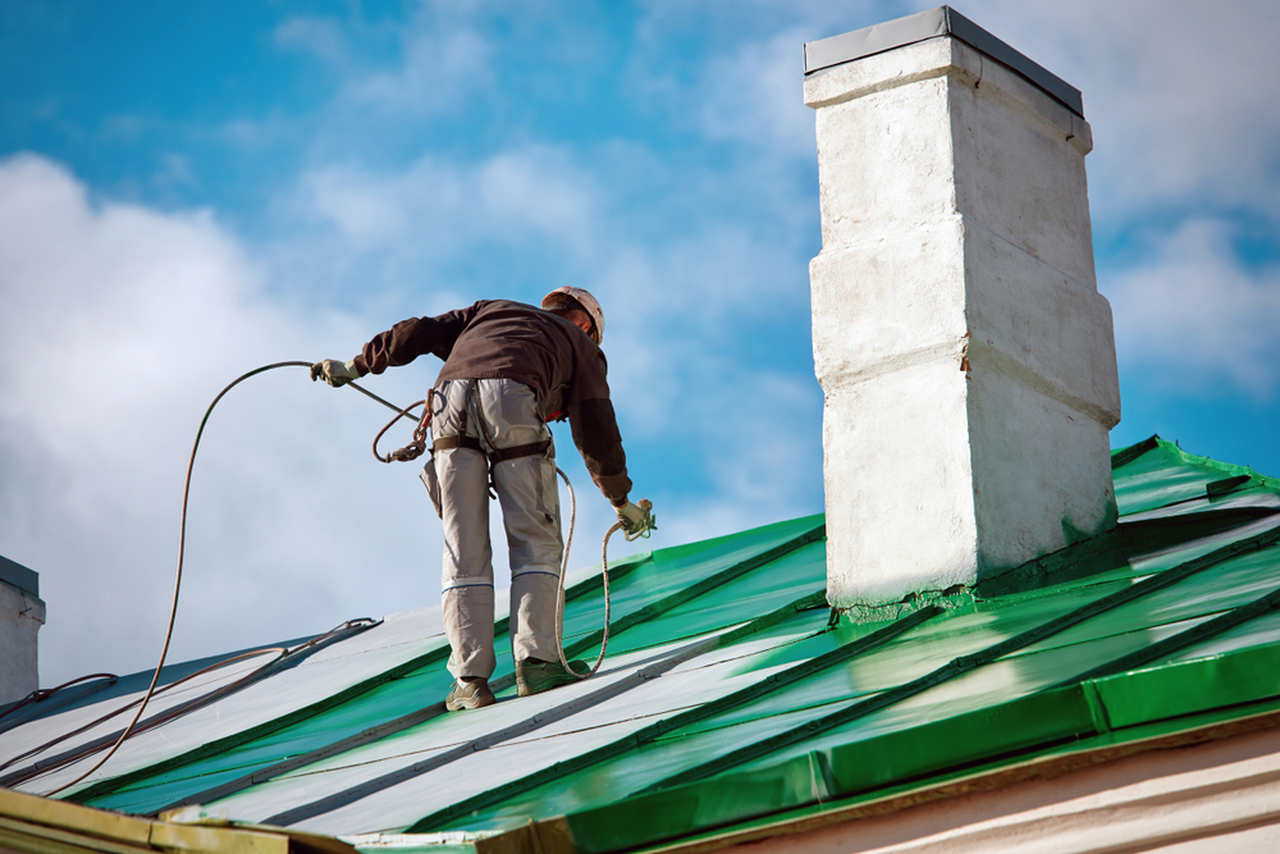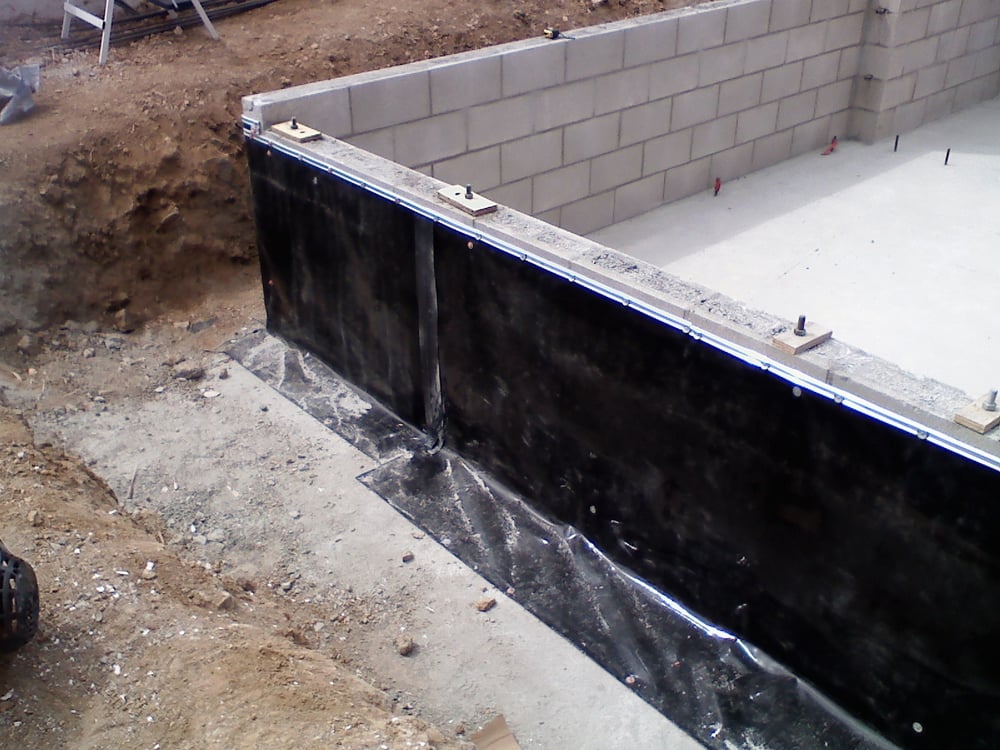How Waterproofing Works: A Comprehensive Check Out Strategies and Technologies
Waterproofing is essential for securing structures from moisture-related damage. It involves various techniques and innovations that produce obstacles versus water breach. Standard methods, such as compacted clay, exist together with modern advancements like liquid-applied membranes. Comprehending the nuances of these techniques is important for reliable application. The performance of any type of waterproofing service hinges not just on the techniques utilized yet also on continuous upkeep and evaluation. What are the key variables that affect lasting performance?
Understanding the Fundamentals of Waterproofing
Waterproofing is a necessary process that protects frameworks from water intrusion, which can bring about considerable damages gradually. This method entails the application of different materials and strategies developed to produce an obstacle versus dampness. The primary objective is to avoid water from penetrating surface areas, which can cause deterioration, mold and mildew growth, and architectural instability.Various factors influence the choice of waterproofing approach, consisting of the sort of framework, its location, and ecological conditions. Recognizing the physics of water activity and the properties of different products is important in picking an effective waterproofing solution.Effective waterproofing not only safeguards structures but also enhances their longevity and integrity. Usually, it is integrated right into the layout stage of building and construction to assure detailed defense. As understanding of water-related problems grows, the value of comprehending waterproofing basics becomes increasingly clear to engineers, building contractors, and residential property proprietors alike.
Standard Waterproofing Methods
Traditional waterproofing approaches have actually been utilized for centuries, depending on reliable strategies and materials to safeguard frameworks from water damage. Among the earliest techniques involves using clay, which, when compacted, develops an all-natural barrier versus wetness. Furthermore, asphalt, a sticky, black product acquired from oil, has actually been employed for its water-resistant residential properties, typically put on roofings and foundations.Another technique includes the application of lime-based plasters, which provide a breathable layer that enables dampness to get away while avoiding water access. Thatch roofing, a typical approach still seen in some societies, provides superb waterproofing as a result of its tightly loaded straw layers.Moreover, making use of stone and brick has actually projected, as these products are inherently immune to water when effectively set up. In general, typical waterproofing methods highlight the importance of picking ideal products and building and construction techniques to improve resilience versus water invasion.
Modern Waterproofing Technologies
Innovations in contemporary waterproofing technologies have actually transformed the way structures are safeguarded from water damages. Innovative methods such as liquid-applied membrane layers and innovative sealers have improved the performance and versatility of waterproofing services. These innovations permit smooth application, reducing the danger of leakages and making certain comprehensive protection over complicated surfaces.Moreover, the combination of wise modern technologies, such as moisture sensing units and automated monitoring systems, enables real-time assessment of waterproofing performance. This proactive approach helps with timely maintenance and decreases long-lasting repair work costs.Additionally, improvements in spray-applied layers provide quick application and superb adhesion, adjusting to different substratums while supplying robust protection. Techniques like polymer-modified systems better enhance adaptability and resilience, making them appropriate for varied settings. Overall, modern waterproofing innovations not just reduce water invasion yet additionally add to the long life and sustainability of structures, marking a significant shift in the market.
Materials Made Use Of in Waterproofing
The performance of waterproofing services heavily counts on the products used in their application. Different materials are utilized to produce obstacles versus water access, each with special residential or commercial properties suited for different settings. Typically utilized materials consist of membrane layers, layers, and sealants.Liquid-applied membrane layers, commonly made from polyurethane or acrylic, develop a smooth obstacle that adapts to complex surfaces. Sheet membranes, generally constructed from rubber or thermoplastic, deal resilience and are perfect for larger areas. Furthermore, cementitious waterproofing products, made up of cementitious compounds, supply outstanding bond and flexibility.Sealants made from silicone or polyurethane are crucial for joints and seams, guaranteeing complete protection. Moreover, sophisticated products, such as geo-composite membranes, integrate numerous features, enhancing performance. On the whole, the selection of waterproofing materials is crucial in attaining long-lasting and efficient water resistance, customized to specific project demands and environmental problems.
Usual Applications of Waterproofing
Waterproofing plays a crucial duty in different sectors, ensuring the durability and honesty of structures. Typical applications consist of domestic remedies that protect homes, industrial framework that safeguards companies, and industrial settings that require durable security view it now versus moisture. Comprehending these applications highlights the relevance of waterproofing in maintaining both security and capability throughout different settings.
Residential Waterproofing Solutions
Lots of homeowners deal with difficulties with dampness breach, making efficient domestic waterproofing options essential. Various methods exist to address this problem, consisting of inside and outside waterproofing systems. Interior services commonly entail the application of sealers and coatings to cellar wall surfaces, which assist stop water infiltration. Outside methods normally consist of the installation of water drainage systems and water-proof membrane layers that divert water far from the foundation.Additionally, property owners may consider sump pumps to get rid of water build-up and dehumidifiers to control moisture levels. Correct grading and the usage of gutters additionally play a vital function in handling water circulation around the home. By executing these approaches, home owners can considerably decrease the danger of water damage and mold and mildew growth, making certain a dry and secure living atmosphere.

Industrial Facilities Security
Efficient waterproofing options play an essential role in the protection of commercial infrastructure. Sump pump installation & replacement Omaha. These methods are crucial for safeguarding structures, car parking structures, and bridges from water damage, which can compromise structural integrity and lead to pricey repairs. Common applications include the installation of membrane layers, finishings, and sealants that develop obstacles versus moisture seepage. Locations such as basements, roof coverings, and outside walls are often focused on to guarantee longevity and durability. Furthermore, waterproofing systems can improve energy efficiency by preventing water-related issues that might cause mold growth and deterioration. By executing robust waterproofing procedures, residential or commercial property owners can shield their investments and maintain functional performance, eventually contributing to the general sustainability of business centers
Industrial Applications Review
While different fields deal with one-of-a-kind challenges, the requirement for trusted waterproofing remedies continues to be a consistent in industrial applications. Industries such as manufacturing, building and construction, and energy typically experience atmospheres where moisture direct exposure can threaten architectural honesty and operational efficiency. In manufacturing facilities, waterproofing is crucial for safeguarding machinery and materials from water damage. In building, it safeguards structures and basements against groundwater infiltration. The power field depends on waterproofing for the defense of equipment in hydroelectric plants and offshore frameworks. In addition, food handling markets utilize waterproofing to assure health and compliance with safety and security criteria. On the whole, efficient waterproofing services are vital for enhancing sturdiness, safety, and performance throughout different industrial setups.
Maintenance and Longevity of Waterproofing Solutions
Although waterproofing remedies are made to use long-lasting security versus wetness intrusion, normal upkeep is necessary to assure their efficiency and durability - Water Solutions Omaha. Regular assessments great post to read play a substantial function in identifying possible concerns such as cracks, peeling off, or indications of water damages. Attending article source to these problems immediately can avoid more degeneration and costly repairs.Additionally, cleaning the surface area of waterproofed locations aids get rid of dust and particles that could endanger the integrity of the waterproofing barrier. It's likewise a good idea to reapply protective finishings or sealants as recommended by manufacturers to preserve perfect efficiency. Ecological elements, such as UV direct exposure and extreme weather condition problems, can affect the life expectancy of waterproofing products, making normal analysis vital
Frequently Asked Concerns
Can Waterproofing Be Applied in Cold Weather Condition?
The inquiry of using waterproofing in cool weather raises issues regarding bond and treating. Lots of items might not execute at their ideal in reduced temperature levels, demanding mindful option and factor to consider of details guidelines for effective application.
For How Long Does Waterproofing Generally Last?
The duration of waterproofing effectiveness varies based upon products and ecological elements. Normally, it can last from five to ten years, however normal maintenance and examinations are necessary to guarantee peak performance and long life.
Is Do It Yourself Waterproofing Effective and Safe?
The efficiency and safety and security of do it yourself waterproofing depend upon different aspects, including material quality and application strategy. While some people attain acceptable results, others may encounter issues that endanger long-lasting security and structural integrity.
What Are the Indicators of Failing Waterproofing?
Indicators of stopping working waterproofing include visible water stains, peeling paint, mold development, stuffy smells, and moisture in walls or ceilings - Landscape drainage Omaha. These indicators suggest compromised obstacles, necessitating timely assessment and potential removal to avoid further damages
Exactly how Do I Pick the Right Waterproofing Specialist?

Comments on “Top 5 Reasons to Consider Basement waterproofing Omaha for a Dry Living Space”